The Delta Institute has posted an opportunity for a Development Intern for either the Fall 2014 or the Spring 2015 semester this coming academic year. Check out its website and the detailed description below for position details and application deadlines.
Category: Education
Water, Climate Change, Science, & Literature
This month one of Chicago’s public radio stations, WBEZ (91.5 FM), has kicked off a fascinating and timely series about water, science, and the humanities. It’s called After Water, and according to the series’ website, the project asks “writers to peer into the future—100 years or more—and imagine the region around the Great Lakes, when water scarcity is a dominant social issue. It’s a cosmic blend of art and science . . . [that will feature] stories, research, photos and more.”
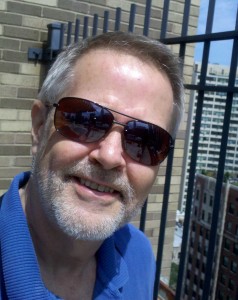
Kicking off the series this week was a Morning Shift conversation on WBEZ with my longtime Roosevelt colleague, Dr. Gary Wolfe (the guy who hired me, by the way), one of the world’s foremost authorities on the literature of sci-fi and fantasy. Gary was in the house to talk about the emergent genre of “cli-fi,” or fiction about climate change, and its relation to water issues. Not only was Gary completely at home in this milieu due to his many years’ experience doing his own radio show in Chicago, “Interface,” but this gig was an apt follow-up to his teaching of a Special Topics SUST 390 seminar this past spring entitled “Sustainability in Film and Fiction.”
I look forward to following the stories and images within this unfolding After Water series, as it’s a great example of the need to integrate science and the humanities in constructing compelling narratives about the crisis of climate change, a subject I addressed briefly in this short essay from last summer.
June 2014 Guest Talks and Conference Presentations
The first part of June has been exceptionally chatty, academically speaking, as I think I’ve had my busiest week ever in my 20-year academic career giving presentations and hobnobbing with colleagues at other institutions. Thus far I’ve been right here in the Chicago area, though a nice little trip to New York City awaits later this week — which is exciting, since I haven’t been to New York since the fall of 2006 (for the SLSA Conference at NYU).
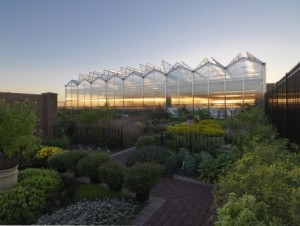
Last Sunday, as we flipped the home calendars to June, I drove out to Joliet Junior College, the nation’s oldest community college, to give a guest lecture entitled “Sustainability and the Future of Cities: Connecting Curriculum to Community” (pdf), as part of JJC’s three-day faculty retreat for the Grand Prairie Project — an effort to encourage the integration of sustainability across JJC’s curriculum led by my colleague, friend, and fellow Joliet public school alum Maria Rafac, an architectural technology prof at the college.
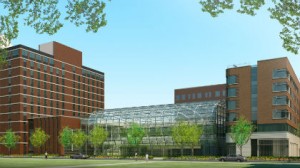
Then on Wednesday, June 4th, I collaborated with an RU professor, Aaron Shoults-Wilson, on a presentation (pdf) about sustainability/environmental science education at Roosevelt for a “Research and Education towards Sustainability Symposium” sponsored by the Institute for Environmental Sustainability at Loyola University in Chicago. This small gathering was especially interesting, since the IES was hosting a group of Vietnamese environmental scientists and educators from Vietnam National University. Learning about their work in Ho Chih Min City and other locations throughout Vietnam was utterly fascinating, and they in turn were extremely excited by the chance to explore Chicago and meet like-minded colleagues here in the US. I also got my first tour of Loyola’s new IES facility in my old neighborhood of East Rogers Park, opened in Fall 2013, which is quite impressive indeed.
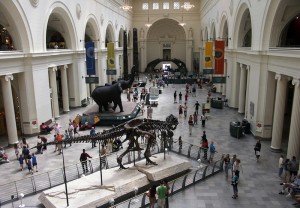
Finally, on Thursday, June 5th, I gave my first talk at the Field Museum of Natural History along the downtown Chicago lakefront, as part of the museum’s Interchange monthly lecture series sponsored by the Dept. of Science and Education. These gatherings are internal to the museum, and provide a chance for researchers to present data and report on works in progress from all the various disciplines of the museum in a friendly setting that encourages active discussion and cross-disciplinary connections. My talk, “Reading the Book of Nature: May Theilgaard Watts’ Art of Ecology,” (pdf), reflected on how the arts and humanities complement scientific discourse, in this case within the context of urban ecosystems wherein live over 80% of Americans and more than 50% of people worldwide.
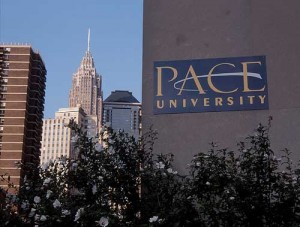
Later this week, I fly to New York City for the annual conference of the Association for Environmental Studies and Sciences, one of the academic tribes of which I’m an enthusiastic member. Hosted this year by Pace University in lower Manhattan, near the foot of the Brooklyn Bridge, the conference theme is “Welcome to the Anthropocene: From Global Challenge to Plantery Stewardship.” This smallish conference of 500-600 attendees is always notable for its friendly and informal atmosphere, great spirit of convivial networking among colleagues from many different areas of academia (from the sciences to the social sciences to the humanities), and fun field excursions. My talk about my teaching experiences in a service-learning course at the Chicago Lights Urban Farm is part of a panel entitled “Innovative Pedagogies for Environmental Justice and Community Engagement.” I’m eager to hear what my fellow panelists have in store for our session!
Assessing Sustainability Literacy at RU
Yesterday I took part in an event at Roosevelt sponsored by its Office of Institutional Research, Assessment, and Reaccreditation on academic program assessment. Faculty and staff from over a dozen academic departments across the six colleges of the university presented data and conclusions from the 2013-14 academic assessment work that was supported by a “microgrant” program for the Spring 2014 semester.
I gave a short presentation (see this pdf of the slideshow) on the assessment work we did in the Sustainability Studies Program in 2013-14: the Sustainability Literacy Survey that was administered to all Fall 2013 SUST classes as well as to a sub-sample of other CPS undergraduate courses in Criminal Justice and Professional & Liberal Studies gen ed seminars.
This preliminary survey was a key part of the SUST Program’s Assessment Plan for 2013-14, and was based on the “Assessment of Sustainability Knowledge” survey instrument developed in July 2013 by The Environmental & Social Sustainability Lab, The Ohio State University. This survey was endorsed as assessment tool by AASHE and has been promoted on the AASHE blog to other universities wishing to gather comparable data about the general level of sustainability literacy among US undergraduates.
Goals of the Sustainability Literacy (SL) Survey
- Determine baseline SL of RU undergrads in 2013
- Compare groups of students (by class, age, major, etc.)
- Facilitate program assessment in relation to SL at other US universities
- Provide one means of assessing the current SUST curriculum
Results
Despite the rather small sample size (173 surveys will returned) of this pilot study, some useful data resulted from the effort. The graph below displays how different majors performed on the survey in terms of overall % of correct answers out of 28 questions that covered environmental, economic, and social topics related to sustainability. SUST majors outperformed all other groups by a wide margin here.
Another useful way to view the data is to convert the % correct scores of each respondent to a letter grade, using the traditional scale of 90% = A, etc. This provides a more nuanced look at how students in different groups do on the assessment beyond the mean score. Notably, almost two-thirds of SUST majors scored a B or higher on the survey, while only 6% failed. In contrast, 87% of non-SUST majors scored a C or lower on the survey.
- Sustainability Studies majors as a group score significantly higher on this sustainability literacy survey than non-SUST students at RU as a whole, or any other sub-group of undergraduate majors.
- RU students as a whole score slightly lower than undergrads at the Ohio State University (64% vs. 69%, respectively), but their performance is comparable.
- Overall, undergraduate students at RU are relatively illiterate about basic sustainability facts and issues, as their average score is a “D” when converted to a letter grade.
- SUST majors scores potentially indicate the value of the curriculum at improving basic sustainability literacy at the undergraduate level, though some such students may enter RU with a higher baseline level of SL.
- There is a real need for sustainability education across the board for all undergraduate students, regardless of major.
Next Steps for SUST Program Assessment
- Continue analyzing results of SL Survey and share with SUST part-time faculty.
- Explore feasibility of administering the student to a representative sample of all RU undergrads in 2014-15.
- Contribute assessment data to RU’s Environmental Sustainability Committee and discuss relevance STARS 2.0 reporting for overall university sustainability efforts.
- Follow up with other assessment activities: curriculum review, alumni survey, writing/communication/critical analysis skills, etc.
Special Acknowledgment: The “Rogers Factor”
Key contributions to this survey assessment and analysis were made by two invaluable people at RU, who together constitute the “Rogers Factor”:
Ester Rogers, RU’s Office of Institutional Research: helped with survey design & implementation, suggestions for modes of analysis, and Microgrant funding support during the Spring 2014 semester.
Scott Rogers, junior SUST major in the College of Professional Studies: performed key data entry work and contributed a wide range of preliminary analysis of survey results.
Resources on Sustainability Assessment
- Sustainability Studies Assessment Plan (pdf), updated Jan. 2014
- Ohio State University’s Environmental and Social Sustainability Lab, Measuring Undergraduate Students’ Knowledge of Sustainability (July 2013)
- Monika Urbanski, “Assessing Sustainability Literacy: Challenges, Current Research, and Opportunities for Collaboration” (AASHE blog 5 Nov 2012); How Many Dots To Connect? Defining Sustainability in the Curriculum (18 Feb 2013)
- Environmental Literacy Council
- AASHE blog posts on curriculum
- NSSE Sustainability Education Consortium: A First Year Report (2011)
Attending the Sustainable City Year Program Conference at Univ of OR
Yesterday afternoon I arrived in Eugene, Oregon, for the Sustainable City Year Program conference — the 3rd such gathering held annually at the University Of Oregon. I’m on a fact-finding mission to learn how the five-year-old SCYP got started at U of O, get insights from other colleges and universities who have started their own versions of the program at their institutions, and bring back good ideas to potentially implement at Roosevelt in Chicago.
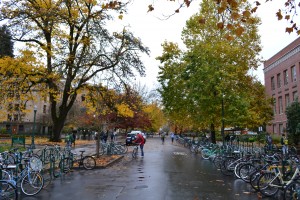
I’ve already met some fantastic and interesting people here in Eugene, where we’re comfortably appointed at the downtown Eugene Hilton, and greatly anticipating today’s workshops and discussions. This gathering is rather small — more like a workshop than a conference — so I expect to get to know almost everyone in the group fairly easily in what will be three days of vigorous discussion and socializing. There are folks here from all across the US and even abroad (the Centre Transnational de Recherche Gabon), and it’s a nice mix of academics like myself as well as city professionals and officials — since the point of this program is connecting academic service learning to urban sustainable development in particular communities. But as far as I can tell, the only other folks from IL are a group from Augustana College in Rock Island; so I’m the sole participant from the Chicago Region. (That makes me rather happy, actually.)
According to By Nicole Ginley-Hidinger writing for the SCI blog, here’s an overview of the three-day conference:
A lot of student work goes to waste. After brilliant plans, layouts, and other assignments are turned in for a final grade, the reports, essays, and drawings are crammed into the back of a closet and forgotten about. SCYP changes that by creating a partnership between the University and a nearby city. Students get the chance to pitch ideas on real-world projects while cities get a wide array of proposals that they can incorporate into the development and growth of sites and programs.
Institutions in over ten states have now implemented SCYP, adopting the program and crafting their own innovative approach. During April 16-18, many of these schools will converge in Eugene to share ideas and teach other universities interested in developing their own program during the SCYP conference.
The three-day conference includes SCI faculty who will discuss the Oregon model, panels made up of cities Oregon has worked with, cities other universities have worked with, and panels of program coordinators and faculty who will address how the format can be adapted and utilized in different locations.
During the 2014 SCYP Conference, scheduled for April 15-18, the University of Oregon, will share tactics to creating a successful program centered on sustainability with the help of SCYP-like programs across the nation.
“The conference is huge,” says SCI co-director, Marc Schlossberg. “The conference will give new programs all of the context, and the nut and bolts, of how a program like this is organized, how it can be effective, and how to navigate through the system of cities and universities to get something done and organized.”
The SCI staff will share everything, from inspiring moments like the support they receive from the city staff and community to the more difficult aspects, such as not being able to find a city last year.
The three-day conference includes the SCI “program how-to”, where the Oregon model is broken down into city, student, and institutional engagement. The model is explained through presentations and discussions with cities Oregon has worked with, cities other universities have worked with, and panels of program coordinators and faculty who will address how the format can be adapted and utilized in different locations.
“There’s been schools around the country that have been interested in this type of work and to this scale,” says SCI co-director, Nico Larco. “They have an interest in developing programs that are similar. We have all these different adaptations of this model.”
SCI wants to share that their model is versatile and can be implemented at any school, no matter the size or the type.
“The basic idea is that it takes advantage of classes that are already being taught in the university and leverages them in a different way,” says Schlossberg. “It can work anywhere there’s students, courses, and faculties.”
The main goal of the conference is to help schools build programs that take advantage of the resources that they already have to help the communities around them. In SCYP programs, classes help address vital community issues, such as climate change, minority outreach, and how to handle limited fiscal resources in conjunction with a community need for fresh ideas that are from a neutral source.
“Students are demanding applied learning opportunities and to make an impact in the world now, while they are students,” says Schlossberg. “We have idea-generating machines in students, classes and faculty, so if we’re going to make any progress at all on these big vexing multi-disciplinary problems in a community, the university should be active in addressing them.”
The first day of the conference will focus on schools that are interested in developing a program of their own. The University of Oregon is the sole presenter and will teach curious schools the ins-and-outs.
“[It’s on] everything from how you structure within the university, like the faculty, to how you structure things within the city, like contracts, the schedule throughout the year, and the breath and depth of the projects” says Larco.
The second day is focused both on schools who already have programs and schools who want to build them. The discussions will center on engaging faculty, students, budgeting issues, funding issues and different ways to work with cities.
It will feature schools who have adopted the program and implemented it in unique and innovative ways, from the Oregon model where all thirty classes focus on one community to other campuses who engage with several communities at one time.
The third day is focused on developing a national network of SCYP programs and how universities can go after funding and develop together.
“We are interested in changing the way higher education is delivered in this country,” says Schlossberg. “The more people that are engaged in that endeavor, the stronger the message is.”
This is the third year the University of Oregon will put on the SCYP conference. The 2014 SCYP conference strives to share how to create an effective program while building a peer to peer network of institutions who are ready to improve the higher education model.
Teaching Climate Change through Literature
A somewhat interesting article from yesterday’s NY Times about literature-and-environment courses that are beginning to address issues of climate change. Unfortunately, the author didn’t know about Prof. Gary Wolfe’s groundbreaking seminar here at Roosevelt this spring, “Sustainability in Film and Fiction,” as that would’ve been a great example to profile here. Here’s the full text of the article:
EUGENE, Ore. — University courses on global warming have become common, and Prof. Stephanie LeMenager’s new class here at the University of Oregon has all the expected, alarming elements: rising oceans, displaced populations, political conflict, endangered animals.
The goal of this class, however, is not to marshal evidence for climate change as a human-caused crisis, or to measure its effects — the reality and severity of it are taken as given — but how to think about it, prepare for it and respond to it. Instead of scientific texts, the class, “The Cultures of Climate Change,” focuses on films, poetry, photography, essays and a heavy dose of the mushrooming subgenre of speculative fiction known as climate fiction, or cli-fi, novels like “Odds Against Tomorrow,” by Nathaniel Rich, and “Solar,” by Ian McEwan.
“Speculative fiction allows a kind of scenario-imagining, not only about the unfolding crisis but also about adaptations and survival strategies,” Professor LeMenager said. “The time isn’t to reflect on the end of the world, but on how to meet it. We want to apply our humanities skills pragmatically to this problem.”
The class reflects a push by universities to meld traditionally separate disciplines; Professor LeMenager joined the university last year to teach both literature and environmental studies.
Her course also shows how broadly most of academia and a younger generation have moved beyond debating global warming to accepting it as one of society’s central challenges. That is especially true in places like Eugene, a verdant and damp city, friendly to the cyclist and inconvenient to the motorist, where ordering coffee in a disposable cup can elicit disapproving looks. Oregon was a pioneer of environmental studies, and Professor LeMenager’s students tend to share her activist bent, eagerly discussing in a recent session the role that the arts and education can play in galvanizing people around an issue.
To some extent, the course is feeding off a larger literary trend. Novels set against a backdrop of ruinous climate change have rapidly gained in number, popularity and critical acclaim over the last few years, works like “The Windup Girl,” by Paolo Bacigalupi; “Finitude,” by Hamish MacDonald; “From Here,” by Daniel Kramb; and “The Carbon Diaries 2015,” by Saci Lloyd. Well-known writers have joined the trend, including Barbara Kingsolver, with “Flight Behavior,” and Mr. McEwan.
And with remarkable speed — Ms. Kingsolver’s and Mr. Rich’s books were published less than a year ago — those works have landed on syllabuses at colleges. They have turned up in courses on literature and on environmental issues, like the one here, or in a similar but broader class, “The Political Ecology of Imagination,” part of a master’s degree program in liberal studies at the University of Wisconsin at Milwaukee.
For now, Professor LeMenager’s class is open only to graduate students, with some working on degrees in environmental studies, others in English and one in geography, and it can have the rarefied feel of a literature seminar. Fueled by readings from Susan Sontag and Jacques Derrida, the students discuss the meaning of terms like “spectacle” and “witness,” and debate the drawbacks of cultural media that approach climate change from the developed world’s perspective.
Climate novels fit into a long tradition of speculative fiction that pictures the future after assorted catastrophes. First came external forces like aliens or geological upheaval, and then, in the postwar period, came disasters of our own making.
Novels like “On the Beach,” by Nevil Shute, and “A Canticle for Leibowitz,” by Walter M. Miller Jr., and films like “The Book of Eli,” offered a world after nuclear war. Stephen King’s “The Stand,” Margaret Atwood’s “Oryx and Crake” and “The Year of the Flood,” and films like “12 Monkeys” and “I Am Legend” imagined the aftermath of biological tampering gone horribly wrong.
“You can argue that that is a dominant theme of postwar fiction, trying to grapple with the fragility of our existence, where the world can end at any time,” Mr. Rich said. Before long, most colleges will “have a course on the contemporary novel and the environment,” he said. “It surprises me that even more writers aren’t engaging with it.”
The climate-change canon dates back at least as far as “The Drowned World,” a 1962 novel by J. G. Ballard with a small but ardent following. “The Population Bomb,” Paul Ehrlich’s 1968 nonfiction best seller, mentions the potential dangers of the greenhouse effect, and the 1973 film “Soylent Green,” best remembered for its grisly vision of a world with too many people and too little food, is set in a hotter future.
The recent climate fiction has characters whose concerns extend well beyond the climate, some of it is set in a present or near future when disaster still seems remote, and it can be deeply satirical in tone. In other words, if the authors are aiming for political consciousness-raising, the effort is more veiled than in novels of earlier times like “The Jungle” or “Uncle Tom’s Cabin.”
Professor LeMenager’s syllabus includes extensive nonfiction writing and film, alongside the fiction, and she said she had little interest in truly apocalyptic scenarios or those that are scientifically dubious. She does not, for example, show her students “The Day After Tomorrow,” the 2004 film about an ice age caused by global warming that was a huge hit despite being panned by critics and scientists alike, though she says everyone asks her about it.
Stephen Siperstein, one of her students, recalled showing the documentary “Chasing Ice,” about disappearing glaciers, to a class of undergraduates, leaving several of them in tears. Em Jackson talked of leading groups on glacier tours, and the profound effect they had on people. Another student, Shane Hall, noted that people experience the weather, while the notion of climate is a more abstract concept that can often be communicated only through media — from photography to sober scientific articles to futuristic fiction.
“In this sense,” he said, “climate change itself is a form of story we have to tell.”
SUST 350 Course Preview for Fall 2015
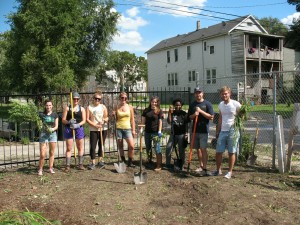
This coming fall semester (2015) I will be offering a transformational service learning course, SUST 350 Service and Sustainability, at the Chicago Campus. Our course theme is Urban Farming, Environmental Education, Community Development, & Social Justice.
- Title/number: SUST 350 Service and Sustainability (section 01)
- Semester offered: Fall 2015
- Location: Chicago Campus / Eden Place Nature Center
- Day/time: Tues 12-3pm
- Pre-req: UWR
SUST majors and minors may take this class to fulfill an upper-level SUST requirement, but 350 also is open to students at large who need a general education course or desire elective credit.
Introduction to the Course
SUST 350 focuses on one of sustainability’s “Three Es” — social Equity — within the broad context of Environmental stewardship and Economic development. Students will learn about one of the most important components of sustainability — food production and consumption — in the context of urban neighborhoods and ecosystems.
By doing hands-in-the-dirt labor at Eden Place Nature Center on the city’s South Side neighborhood of Fuller Park, students will gain direct knowledge of contemporary organic/urban agricultural systems as well as learn about pressing urban social justice issues such as food deserts, gentrification, pollution, environmental racism, and persistent poverty. The initial class meeting will be at RU’s Chicago Campus, and subsequent class meetings will take place at Eden Place Nature Center.
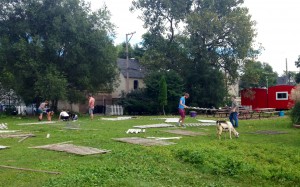
An urban farm is about food, but so much more besides. The Fuller Park community is an economically stressed neighborhood that is bisected by the Dan Ryan expressway and bounded by railroads on its eastern and western borders. Here, an urban farm and community nature center is a source of freshly grown, organic produce; a training ground for local youth in need of practical job skills; a stop valve in the Cradle-to-Prison pipeline; a gathering place for people of all ages in the community for physical exercise, informal education, and social events; a demonstration site for sustainable agricultural and ecological restoration techniques; a model of economic development on a local, sustainable scale; and a means of reconnecting urban folk to the natural world. More generally, in urban areas starved for jobs, green space, safe outdoor gathering places, and fresh quality food, enterprises like Eden Place productively and powerfully address the need for social equity and progressive change.
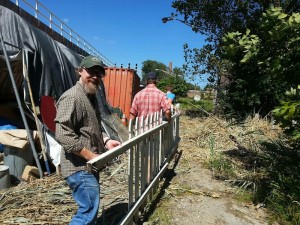
Our main focus will be on helping with various urban agriculture and environmental restoration projects at Eden Place Nature Center at 4417 S. Stewart, as well as at the Eden Place Farm at 4911 S. Shields. Our typical day will consist of meeting at the WB Lobby ~11:30am to take the Red Line to EPNC (students have the option of commuting there directly to meet at noon); convening at 12pm for discussion of assigned readings and, later in the semester, informal student presentations; and then working with Eden Place staff on various environmental, farm, and/or public education projects according to the needs and schedule of Eden Place.
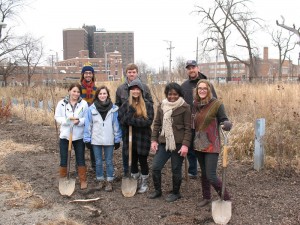
The vast majority of our work takes place outside, regardless of weather. We built trails, planted trees, pulled weeks, raked leaves, managed compost piles, helped set up activities and structures for Octoberfest, repaired and installed fences, and many other chores/activities. We also interacted with EPNC staff to learn about their mission and vision for the future. Last but not least, we always had a little time each week to visit with EPNC’s many animals, including Gaga the goat (who loved to intervene during our roundtable discussions in the gazebo!).
Partner Organization: Eden Place Nature Center
From the Eden Place website:

“In 1997, community member, founder, and Executive Director of Fuller Park Community Development Michael Howard [pictured at left] was concerned about the serious lead poisoning problems affecting the neighborhood children. Through research he discovered that Fuller Park contained the highest lead levels in the city of Chicago. As a community leader he wanted to make some serious changes for the sake of his family and his entire neighborhood, and he decided that this work would start with the illegal dumpsite located across the street from his home.
“Mounds of waste over two stories tall encompassed the entire three acres of land. Mr. Howard acquired the deed for the land and involved the community in a large scale, three year clean-up of the dumpsite. Alongside his wife and fellow activist Amelia, and in partnership with hundreds of volunteers and community members, Mr. Howard led a clean-up project in which more than 200 tons of waste including concrete, wood, tires and other toxin-laced materials were removed from the site.

“Upon clean-up of the site, the next step was development. Tons of fresh soil were brought in to establish the Great Lawn, and the Hope Mound was established as the first permanent fixture on Eden Place. South Point Academy trainees contributed a number of early structures to the Eden Place grounds, including the gazebo, DuSable Trading Post, and the storage sheds. The Mighty Oak and other surrounding trees formed the woodland at the north end of the property, including a reflecting pond meant to encourage reflection and respite from the urban surroundings.
“In May of 2004, Eden Place was honored by the U.S. Environmental Protection Agency and Chicago Wilderness with The Conservation and Native Landscaping Award. The winners were recognized for their extensive and creative use of natural landscaping to support native plants and animals that contribute to the region’s biodiversity. That same month, Eden Place was filmed for a PBS special documentary called Edens Lost & Found. This documentary profiles activists and organizations in Los Angeles, Seattle, Philadelphia, and Chicago who are attempting to ‘improve the quality of life and public health by encouraging community and civic engagement through the restoration of their urban ecosystems.’

“Eden Place has continued to develop and grow with the support and recognition of local leaders and organizations. We have worked to raise awareness amongst community members about the environmental problems that have affected their families for years. Local residents are making connections with nature like never before, and they are feeling a sense of community pride like never before. However, our work in the community is not finished. More than 3/5 of the local area is comprised of abandoned lots where homes and various industries once thrived, and Fuller Park residents still carry the burden of one of the highest local lead contents in the city. Through our partnership with local and national conservation organizations such as the Chicago Zoological Society, the Audubon Society, the U.S. Forest Service International Programs, Chicago Wilderness, Openlands, and NeighborSpace, we will continue to establish green community space and education that will improve the health and well-being of our community.”
For more information on this unique service learning course, please contact Prof. Mike Bryson (mbryson@roosevelt.edu or 312-281-3148).
Reviewing “The Cambridge Introduction to Literature and the Environment,” by Timothy Clark
 Part of an extensive series by this venerable university press, The Cambridge Introduction to Literature and the Environment is a detailed and comprehensive overview of the many relations among literature, criticism, and the natural environment. Author Timothy Clark of Durham University has produced an ambitious, nuanced, and critically adept introduction to the heterogeneous field of ecocriticism that has emerged as an important current of cultural studies over the past two decades. Explicitly pitched to professors as a pedagogical resource but also valuable as a survey of a rapidly maturing academic field, this slim but substantive book is immensely useful for students and professional scholars alike. Clark effectively models the praxis of textual interpretation and intellectual engagement in his writing, which is unfailingly smart and stylistically lucid.
Part of an extensive series by this venerable university press, The Cambridge Introduction to Literature and the Environment is a detailed and comprehensive overview of the many relations among literature, criticism, and the natural environment. Author Timothy Clark of Durham University has produced an ambitious, nuanced, and critically adept introduction to the heterogeneous field of ecocriticism that has emerged as an important current of cultural studies over the past two decades. Explicitly pitched to professors as a pedagogical resource but also valuable as a survey of a rapidly maturing academic field, this slim but substantive book is immensely useful for students and professional scholars alike. Clark effectively models the praxis of textual interpretation and intellectual engagement in his writing, which is unfailingly smart and stylistically lucid.
While several good overviews of ecocriticism have been published previously, some are more than 15 years old while others are edited volumes containing a diverse array of essays written by different scholars. Clark’s book is therefore both a much-needed update on as well as coherent assessment of the present state of ecocriticism, which he defines as the “study of the relationship between literature and the physical environment, usually considered from out of the current global environmental crisis and its revisionist challenge to given modes of thought and practice” (xiii). While Clark sees ecocriticism as “a provocative misfit in literary and cultural debate” (3) since it is a relatively young and unapologetically interdisciplinary field of inquiry, he convincingly documents its contemporary relevance as a means of bringing the humanities to bear on matters of ecological and political import.
Clark provides a 30,000-foot-high perspective on a sprawling and still-evolving critical movement that includes not just the study of Anglo-American nature writing (its historic core concern), but also embraces ecofeminism, critical theory, postcolonial studies, evolutionary biology, environmental justice, animal studies, and other interdisciplinary modes of humanistic inquiry. At the same time, Clark frequently descends from this high-altitude viewpoint to systematically inspect the surface, by which I refer to his frequent close readings of particular texts, authors, genres, or philosophical issues. In doing so, he models for students how ecocritics do their work of interrogating texts, unpacking words and concepts, making connections among disparate themes or ideas, etc. This effortless interplay between comprehensive critical overview and concrete interpretative engagement makes the text useful both for classroom use with advanced undergraduate or graduate students as well as the seasoned scholar seeking insights into ecocritical topics and methods.
The book includes an introduction and 20 chapters, which in turn are grouped into four main sections, the titles of which are more poetically suggestive than transparently informative: “Romantic and Anti-Romantic,” “The Boundaries of the Political,” “Science and the Struggle for Intellectual Authority,” and “The Animal Mirror.” Interspersed throughout are 13 concise “quandaries,” passages in which Clark poses “open invitations to further thought” (xiii). These are enclosed within grey boxes on the page, which along with numerous illustrations provide an arresting visual aesthetic as well as opportunities for stimulating dialogue within the college classroom.
In terms of scope, Clark covers tremendous ground in his elucidation of the connections among literature, criticism, and the natural environment — from Romanticism to questions of genre to current debates about posthumanism; from ecofeminism to science studies to nature writing to environmental justice; from ethics to animal studies to climate change. Two particular chapters highlight Clark’s success in weaving together and making sense of this wide array of subjects as well as his skills in parsing the meaning and relevance of particular texts.
 In Chapter 7, “Thinking like a Mountain” (also the famous title of an oft-cited essay by the American conservationist, ecologist, and writer, Aldo Leopold), Clark identifies an important tension within environmentalism between radical theory and reformist practice. In his words, environmental advocates “must speak in terms accepted within existing structures of governance and economics, the very things they may consider ultimately responsible for environmental degradation in the first place” (77). Next follows a detailed reading of two foundational texts of 20th century American environmental writing — Leopold’s A Sand County Almanac; and, Sketches Here and There (1949) and Rachel Carson’s Silent Spring (1962) — in which Clark traces the aforementioned quandary between radicalism and pragmatism in the rhetoric of Leopold and Carson. While I feel his interpretation downplays the paradigm-challenging environmental ethic espoused by Leopold as well as the explicit critique of the industrial-chemical-military-agricultural complex that is at the heart of Carson’s Silent Spring, I nonetheless greatly admire Clark’s astute and eloquent explication of the form and rhetoric of Sand County Almanac (78-9) that seems tailor-made for introducing students to the deceptively simple yet well-wrought structure of this landmark work.
In Chapter 7, “Thinking like a Mountain” (also the famous title of an oft-cited essay by the American conservationist, ecologist, and writer, Aldo Leopold), Clark identifies an important tension within environmentalism between radical theory and reformist practice. In his words, environmental advocates “must speak in terms accepted within existing structures of governance and economics, the very things they may consider ultimately responsible for environmental degradation in the first place” (77). Next follows a detailed reading of two foundational texts of 20th century American environmental writing — Leopold’s A Sand County Almanac; and, Sketches Here and There (1949) and Rachel Carson’s Silent Spring (1962) — in which Clark traces the aforementioned quandary between radicalism and pragmatism in the rhetoric of Leopold and Carson. While I feel his interpretation downplays the paradigm-challenging environmental ethic espoused by Leopold as well as the explicit critique of the industrial-chemical-military-agricultural complex that is at the heart of Carson’s Silent Spring, I nonetheless greatly admire Clark’s astute and eloquent explication of the form and rhetoric of Sand County Almanac (78-9) that seems tailor-made for introducing students to the deceptively simple yet well-wrought structure of this landmark work.
Similarly engaging is Chapter 13, “Questions of Scale,” in which Clark addresses the interlinked topics of bioregionalism, climate change, global versus local environmental activism, environmental sloganeering, and (lest you think he’s forgotten about literature) ecopoetry. One excellent feature of this chapter is Clark’s penchant for moving beyond Anglo-American literary borders, as he does in his commentary here on Derek Walcott and Édouard Glissant (132-135). Then there’s his especially insightful riff on climate change and the now-clichéd dictum of the Sierra Club, “Think globally, act locally.”
While this phrase “says, in effect: try to understand ecological systems on the largest possible scale and then take action locally in accordance with that understanding,” Clark reveals how the urgent ecological crisis of climate change demonstrates an essential paradox — “one cannot only act locally, [because] . . . any action affects the whole world, however, minutely” (136, emphasis added). Clark correctly notes that the global/local tension as well as climate change are examples of critically important environmental issues that up to now have received scant attention from most ecocritics. What such engagement might entail is illustrated by a reading of Gary Snyder’s bioregional ecopoetry in the final pages of the chapter, work which “use[s] multiple scales of space and time to form a critique of the destructive, one-dimensional and ultimately fragile sphere of the modern neoliberal state” (138).
Two last points about the book, which is beautifully produced by Cambridge University Press (and thus inspired me to newly peruse the titles of this expansive series of “Introduction to” volumes). First, I greatly appreciate the “Further Reading” bibliography at the end, which lists well-chosen sources according to the text’s table of contents, rather than merely (and far less usefully) alphabetically. For those planning an advanced undergraduate course or graduate seminar on, say, “Environmental Literature” or “Ecocriticism or Nature in Literature” or “Art, Humanities, and the Environment,” etc., this bibliography is a must-read, as it provides both seminal background references as well as a cornucopia of potential syllabus readings.
On a less enthusiastic note, the conspicuous omission (for me, at least) of cities, sustainability, and urbanization from the book’s index reveal one lacuna in Clark’s otherwise catholic coverage of contemporary environmental concerns. In a world of accelerating climate change, ongoing pollution, feeble environmental regulation, habitat loss, poverty, and persistent socioeconomic inequity, the global movement toward urbanization that has paralleled the human population explosion (as of 2008, over half the world’s population now resides in urban areas) is something that ecocriticism has finally begun to acknowledge in productive ways, as urban-focused studies published in the field’s foremost scholarly journal, ISLE, testify. Clark’s otherwise valuable and instructive chapter on environmental justice (87-95), for example, misses an opportunity to connect this political movement to its urban origins and, somewhat curiously, features an extended reading of a prototypically male wilderness narrative set in the American West (Norman Maclean’s 1976 novella, A River Runs Through It).
That is, however, a decidedly minor quibble about a skillfully written, eminently readable, and immensely useful book. Far from a pedestrian college textbook, Clark’s Introduction to Literature and the Environment is an erudite survey of ecocriticsm accessible to both scholar and student, as well as a practical tool for demonstrating literature’s representation of and engagement with environmental issues of all kinds. As Clark writes in his concise and hard-hitting final chapter, “The limitations as well as the excitement of ecocritical work to date may reflect the fact that environmental questions are not just a matter of aesthetics, politics, poetics or ethics, but can affect certain ground rules as to what these things mean” (202). In other words, ecocriticism — and by extension, literature and the humanities — matters greatly, for it must join (and provide constructive critiques of) science and policy in engaging the pressing environmental issues of our time. With that bold claim in mind, I can think of no better intellectual map of ecocriticism’s present state or future prospects than this book.
Timothy Clark. The Cambridge Introduction to Literature and the Environment. Cambridge and New York: Cambridge University Press, 2011. Pp. vii+254.
Note: This is a modified version of a review that will appear in a forthcoming issue of the journal Modern Philology.
Environmental Studies at Roanoke College
 This week I had the opportunity to visit the Environmental Studies Program at Roanoke College in Salem, VA, and give two guest lectures.
This week I had the opportunity to visit the Environmental Studies Program at Roanoke College in Salem, VA, and give two guest lectures.
Tuesday, Jan. 14th:
“Writing the Urban Landscape: Literature, Environmental Studies, and the Sustainable Future of Cities” (ppt and pdf of slideshow)
Wednesday, Jan. 15th:
“Exploring the Chicago River: Science, Policy, Ethics, and Sustainability” (ppt and pdf of slideshow)
Introducing Sandra Steingraber at the Great Lakes Bioneers Conference
Back on November 1st, the opening day of the Great Lakes Bioneers environmental sustainability conference on “Community Resilience” hosted by Roosevelt, I had the honor of introducing Dr. Sandra Steingraber, that evening’s keynote speaker. Here’s the text of my introductory comments.
Connection. It’s a basic tenet of ecology as well of human relations. Nothing and no-one are truly disconnected. The water cycle flows through the ground, the ocean, the air . . . and each of us. We throw away our trash and flush our bodily wastes; but ecology teaches us there is no “away.” That is a falsely comforting myth of our disposable and fossil-fueled society, in which pollution and toxicity — in our lakes and streams, in our food, even in human breast milk — are accepted as normal.
Normal? That is where I first met our distinguished keynote speaker this evening, Dr. Sandra Steingraber, back in the late 1980s. More precisely, I mean the campus of Illinois State University in Normal, Illinois, where I had gone for a poetry reading upon the recommendation of my creative writing professor at nearby Illinois Wesleyan, Jim McGowan. He had rightly admonished me for being a lazy writer, too content with a quick semi-catchy draft of a poem. “Go hear my former student, Sandy Steingraber,” he said. “Then you’ll understand the difference between just dashing something off and really working at your craft.” Boy, he was right.
Science. At the time of being blown away by Steingraber’s poetry in Normal, I didn’t know she was a scientist, too. Like me, only a few years earlier, she had studied biology and English at Illinois Wesleyan; then she had gone on to get a masters in creative writing and a PhD in ecology. I remember my brother David attending Columbia College here in Chicago as a theater major and telling me, “I’m taking this amazing class on evolution. It’s taught by a really cool professor, Sandra Steingraber. Do you know her?” I thought, wow — anyone who can get young hipster actors to dig Charles Darwin has to be really good.
That far from eloquent assessment turns out to be uncannily accurate and widely shared. Since the original publication of her acclaimed book, Living Downstream, in 1997, Dr. Steingraber has become an award-winning author of several subsequent books; an influential environmental journalist for Orion, the Huffington Post, and other publications; a sought-after speaker and scientific consultant; an internationally recognized authority on the links between cancer and the chemical pollution of our environment; and a passionate yet scientifically rigorous critic of the environmentally devastating gas and oil extraction process called fracking.
It’s a distinct honor and privilege to have Sandra Steingraber speak at this year’s Great Lakes Bioneers conference at my longtime academic home, Roosevelt University. Her writing and life’s work — as an environmental activist, an artist, and a parent — truly embodies the spirit of this gathering and the ethos of sustainability. As Steingraber argues in Living Downstream and elsewhere, as Rachel Carson knew more than fifty years ago as she wrote the complacency-shattering book Silent Spring, it is not enough to know something scientifically, or to express that knowledge poetically. We must also act — to change policy for the better, to fight for environmental justice in all communities, and to become true stewards rather than reckless exploiters of nature.
Please join me in welcoming Dr. Sandra Steingraber.



